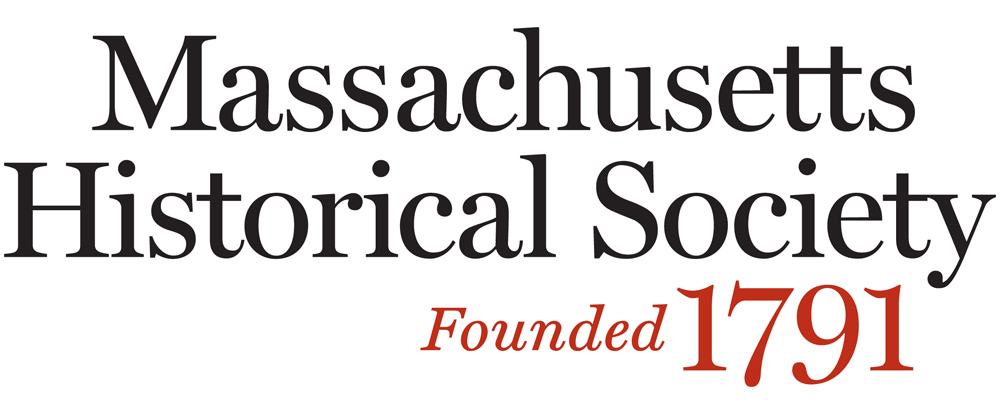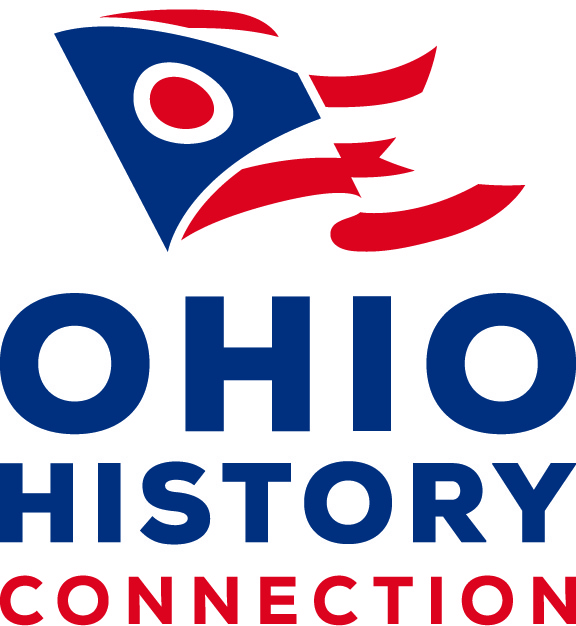from May. 1, 1865
Lincoln Memorial Ribbon
-
Full Title
Lincoln Memorial Ribbon
-
Description
Ribbon printed with a head-and-shoulders portrait of Abraham Lincoln, above an image of his signature, and the dates, "1861-1865."
-
Source
-
Rights
Use of this item for research, teaching and private study is permitted with proper citation and attribution, as defined here. Reproduction of this item for publication, broadcast or commercial use requires written permission. For permission, please contact The Detroit Historical Society.
-
Tags
-
Cite this Item
anonymous. "Lincoln Memorial Ribbon". Remembering Lincoln. Web. Accessed December 16, 2025. https://rememberinglincoln.fords.org/node/182
from May. 1, 1865
Lincoln Memorial Ribbon
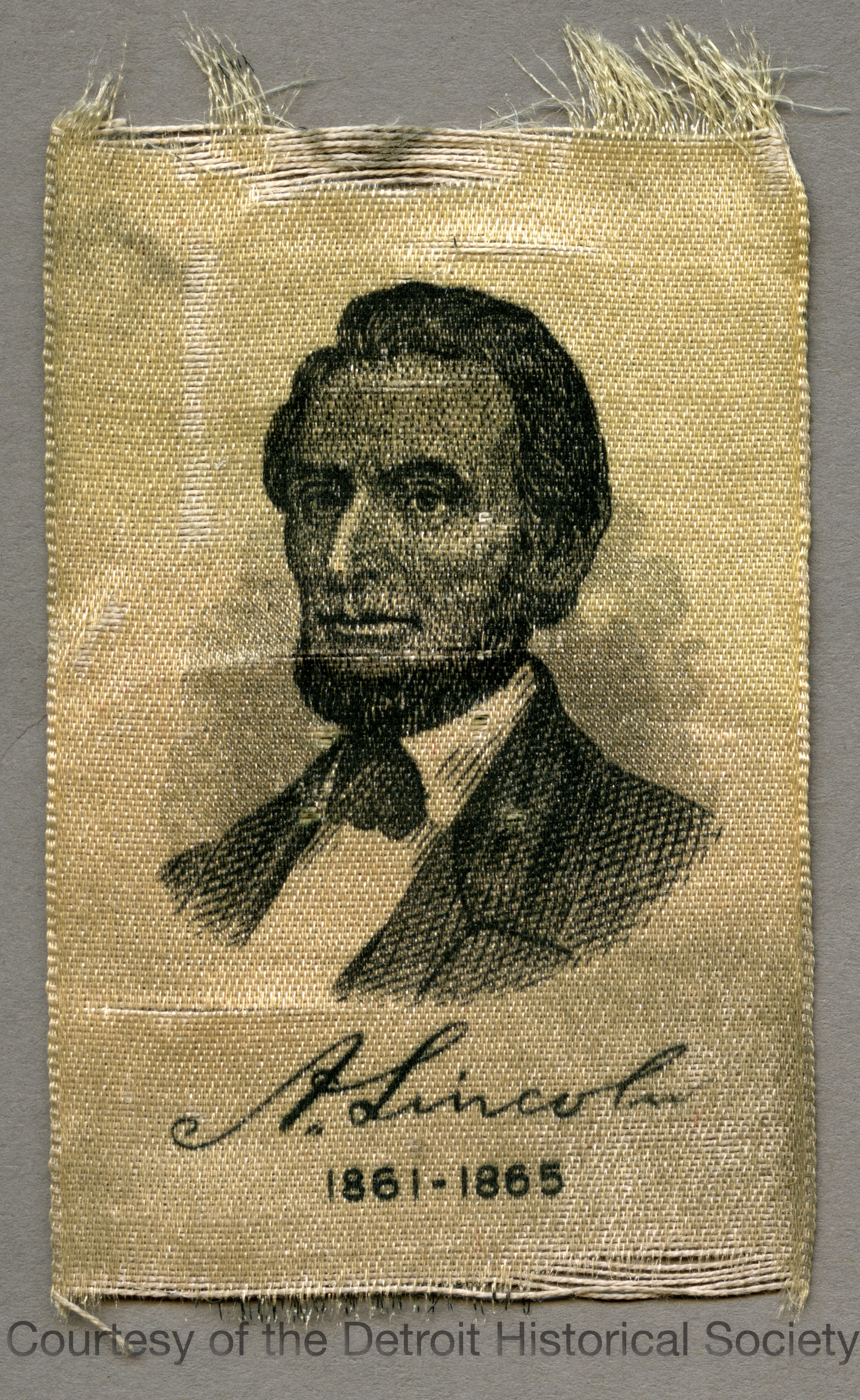
-
Description
Ribbon printed with a head-and-shoulders portrait of Abraham Lincoln, above an image of his signature, and the dates, "1861-1865."
-
Source
-
Rights
Use of this item for research, teaching and private study is permitted with proper citation and attribution, as defined here. Reproduction of this item for publication, broadcast or commercial use requires written permission. For permission, please contact The Detroit Historical Society.
-
Creator
anonymous
-
Date
May 1, 1865
-
Material
ribbon
-
Dimensions
1.75" x 2.75"
from Apr. 15, 1865
Abraham Lincoln hair locket
-
Full Title
Abraham Lincoln hair locket
-
Description
A small gold locket containing Lincoln's hair, cut on the evening of his assassination, 14 April 1865. It is a gold oval locket, engraved on both sides with foliate and scroll design, hinged to reveal braided hair under glass on one side of the inner compartment.
-
Source
Massachusetts Historical Society
-
Rights
Use of this item for research, teaching, and private study is permitted with proper citation and attribution, as: From the Collection of the Massachusetts Historical Society. Reproduction of this item for publication, broadcast, or commercial use requires written permission. For permission, please see this web page.
-
Tags
-
Cite this Item
Unidentified goldsmith. "Abraham Lincoln hair locket". Remembering Lincoln. Web. Accessed December 16, 2025. https://rememberinglincoln.fords.org/node/278
from Apr. 15, 1865
Abraham Lincoln hair locket

-
Description
A small gold locket containing Lincoln's hair, cut on the evening of his assassination, 14 April 1865. It is a gold oval locket, engraved on both sides with foliate and scroll design, hinged to reveal braided hair under glass on one side of the inner compartment.
-
Source
Massachusetts Historical Society
-
Rights
Use of this item for research, teaching, and private study is permitted with proper citation and attribution, as: From the Collection of the Massachusetts Historical Society. Reproduction of this item for publication, broadcast, or commercial use requires written permission. For permission, please see this web page.
-
Creator
Unidentified goldsmith
-
Date
April 15, 1865
-
Dimensions
2.3 cm x 1.5 cm; 2.5 cm (open)
from May. 1, 1865
We Mourn Our Nation's Chief!
-
Full Title
We Mourn Our Nation's Chief!
-
Description
Small printed item commemorating Abraham Lincoln. It includes a line engraving of Abraham Lincoln and a verse recognizing that he was killed by an assassin.
-
Source
Bdses-Sm 1865, Massachusetts Historical Society
-
Rights
Use of this item for research, teaching, and private study is permitted with proper citation and attribution, as: From the Collection of the Massachusetts Historical Society. Reproduction of this item for publication, broadcast, or commercial use requires written permission. For permission, please see this web page.
-
Tags
-
Cite this Item
[Unidentified author]. "We Mourn Our Nation's Chief!". [S.l.: s.n., 1865]. Remembering Lincoln. Web. Accessed December 16, 2025. https://rememberinglincoln.fords.org/node/277
from May. 1, 1865
We Mourn Our Nation's Chief!
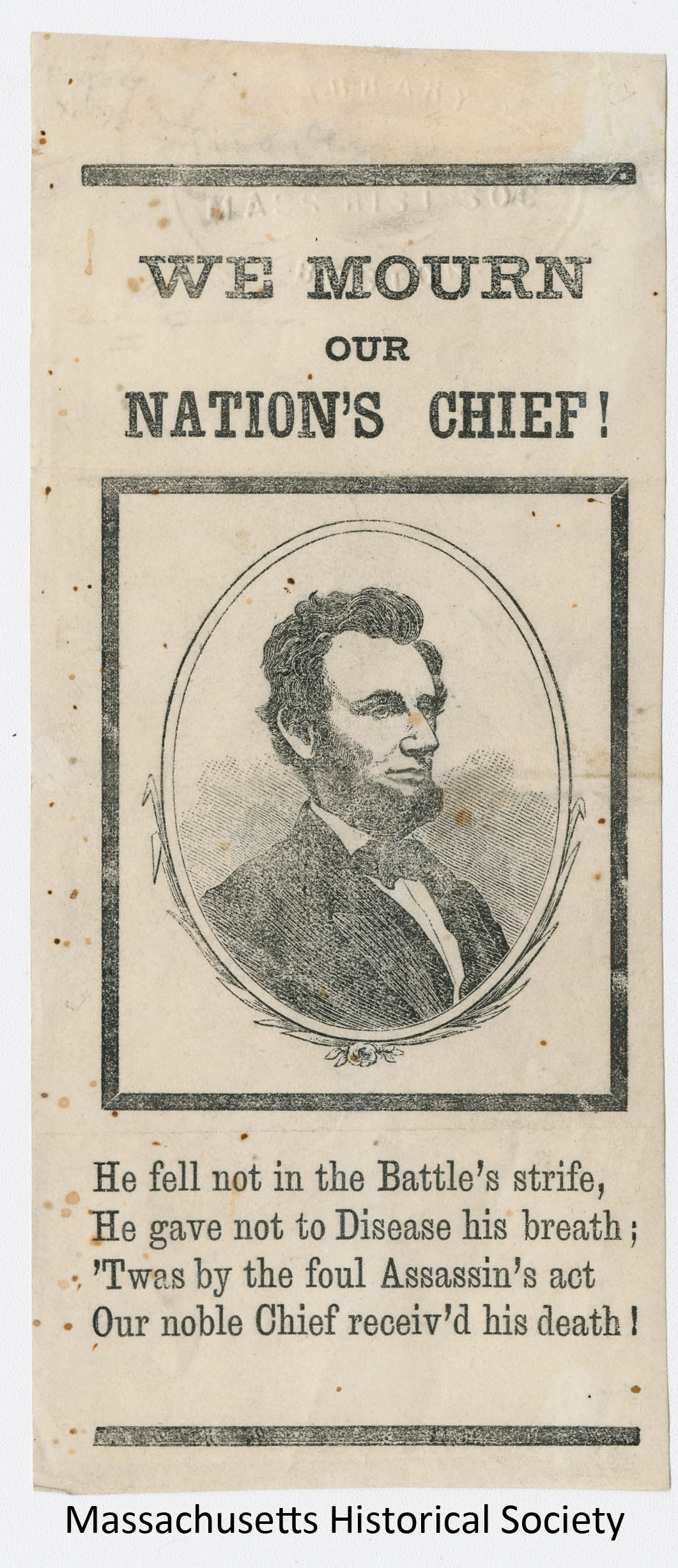
-
Description
Small printed item commemorating Abraham Lincoln. It includes a line engraving of Abraham Lincoln and a verse recognizing that he was killed by an assassin.
-
Source
Bdses-Sm 1865, Massachusetts Historical Society
-
Rights
Use of this item for research, teaching, and private study is permitted with proper citation and attribution, as: From the Collection of the Massachusetts Historical Society. Reproduction of this item for publication, broadcast, or commercial use requires written permission. For permission, please see this web page.
-
Creator
[Unidentified author]
-
Publisher
[S.l.: s.n., 1865]
-
Date
May 1, 1865
from May. 1, 1865
Abraham Lincoln Born, July 12 [sic]
-
Full Title
Abraham Lincoln Born, July 12 [sic], 1809--Died, April 15, 1865
-
Description
This broadside commemorates Abraham Lincoln and includes a quote from William Shakespeare. The broadside mistakenly states the month of Lincoln's birth as July (rather than February).
-
Source
Bdses 1865, Massachusetts Historical Society
-
Rights
Use of this item for research, teaching, and private study is permitted with proper citation and attribution, as: From the Collection of the Massachusetts Historical Society. Reproduction of this item for publication, broadcast, or commercial use requires written permission. For permission, please see this web page.
-
Tags
-
Cite this Item
Unknown. "Abraham Lincoln Born, July 12 [sic], 1809--Died, April 15, 1865". [Boston, Mass.]: Sold, to dealers, by B. B. Russell & Col, 55 Cornhill; Loring, 319 Washington St.; B. J. Remich, 515 Washington St., [1865]. Remembering Lincoln. Web. Accessed December 16, 2025. https://rememberinglincoln.fords.org/node/276
from May. 1, 1865
Abraham Lincoln Born, July 12 [sic], 1809--Died, April 15, 1865
![Abraham Lincoln Born, July 12 [sic], 1809--Died, April 15, 1865](https://rememberinglincoln.fords.org/sites/default/files/100-Lincoln%20broadside.jpg)
-
Description
This broadside commemorates Abraham Lincoln and includes a quote from William Shakespeare. The broadside mistakenly states the month of Lincoln's birth as July (rather than February).
-
Source
Bdses 1865, Massachusetts Historical Society
-
Rights
Use of this item for research, teaching, and private study is permitted with proper citation and attribution, as: From the Collection of the Massachusetts Historical Society. Reproduction of this item for publication, broadcast, or commercial use requires written permission. For permission, please see this web page.
-
Creator
Unknown
-
Publisher
[Boston, Mass.]: Sold, to dealers, by B. B. Russell & Col, 55 Cornhill; Loring, 319 Washington St.; B. J. Remich, 515 Washington St., [1865]
-
Date
May 1, 1865
-
Material
35.8 cm x 28 cm
from Apr. 29, 1865
Ohio Statehouse Decorated for Lincoln Funeral
-
Full Title
Ohio Statehouse Decorated for Lincoln Funeral Photograph
-
Description
This photograph shows the Ohio statehouse decorated for President Abraham Lincoln's funeral in April 1865. A sign above the entrance reads, "With Malice to No One, With Charity For All." Lincoln's funeral procession made several such stops on its journey from Washington D.C. to Lincoln's final resting place in Springfield, Illinois. More than 50,000 mourners paid their respects during the six and a half hours that Lincoln's body lay in state in the rotunda of the Ohio capitol.
-
Source
http://www.ohiomemory.org/cdm/ref/collection/p267401coll32/id/4108
-
Rights
Use of this item for research, teaching, and private study is permitted with proper citation and attribution, as Courtesy of the Ohio History Connection, Abraham Lincoln Presidential Collection . Reproduction of this item for publication, broadcast, or commercial use requires written permission. For permission, please see this web page.
-
Tags
-
Cite this Item
anonymous. "Ohio Statehouse Decorated for Lincoln Funeral Photograph". Remembering Lincoln. Web. Accessed December 16, 2025. https://rememberinglincoln.fords.org/node/275
from Apr. 29, 1865
Ohio Statehouse Decorated for Lincoln Funeral Photograph
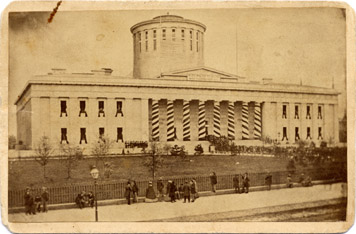
-
Description
This photograph shows the Ohio statehouse decorated for President Abraham Lincoln's funeral in April 1865. A sign above the entrance reads, "With Malice to No One, With Charity For All." Lincoln's funeral procession made several such stops on its journey from Washington D.C. to Lincoln's final resting place in Springfield, Illinois. More than 50,000 mourners paid their respects during the six and a half hours that Lincoln's body lay in state in the rotunda of the Ohio capitol.
-
Source
http://www.ohiomemory.org/cdm/ref/collection/p267401coll32/id/4108
-
Rights
Use of this item for research, teaching, and private study is permitted with proper citation and attribution, as Courtesy of the Ohio History Connection, Abraham Lincoln Presidential Collection . Reproduction of this item for publication, broadcast, or commercial use requires written permission. For permission, please see this web page.
-
Creator
anonymous
-
Date
April 29, 1865
from Apr. 18, 1865
Funeral announcement: Eaton, Ohio
-
Full Title
Abraham Lincoln funeral announcement for Eaton, Ohio
-
Description
Funeral announcement from the Mayor of Eaton, Ohio requesting that all businesses close during the funeral services and that the people meet in their respective places of worship for the purposes of solemnizing the occasion with appropriate services for President Lincoln in Washington, D.C. on Wednesday, April 19, 1865.
-
Source
-
Rights
Use of this item for research, teaching, and private study is permitted with proper citation and attribution, as Courtesy of the Ohio History Connection, Abraham Lincoln Presidential Collection . Reproduction of this item for publication, broadcast, or commercial use requires written permission. For permission, please see this web page.
-
Tags
-
Cite this Item
Freeman, I. E. . "Abraham Lincoln funeral announcement for Eaton, Ohio". Remembering Lincoln. Web. Accessed December 16, 2025. https://rememberinglincoln.fords.org/node/274
from Apr. 18, 1865
Abraham Lincoln funeral announcement for Eaton, Ohio

-
Description
Funeral announcement from the Mayor of Eaton, Ohio requesting that all businesses close during the funeral services and that the people meet in their respective places of worship for the purposes of solemnizing the occasion with appropriate services for President Lincoln in Washington, D.C. on Wednesday, April 19, 1865.
-
Source
-
Rights
Use of this item for research, teaching, and private study is permitted with proper citation and attribution, as Courtesy of the Ohio History Connection, Abraham Lincoln Presidential Collection . Reproduction of this item for publication, broadcast, or commercial use requires written permission. For permission, please see this web page.
-
Creator
Freeman, I. E.
-
Date
April 18, 1865
from Apr. 30, 1865
Ulysses S. Grant in Mourning
-
Full Title
Ulysses S. Grant in Mourning
-
Description
Portrait of Ulysses S. Grant taken in April 1865 after accepting General Robert E. Lee's surrender at Appomattox. Grant is wearing a black crepe mourning band on his arm in honor of President Abraham Lincoln after he was assassinated. The photograph was taken in April 1865. However, the photographer mounted the portrait on a mat that has a printed copyright statement and the earlier date 1863.
-
Source
http://www.ohiomemory.org/cdm/ref/collection/p267401coll32/id/9296
-
Rights
Use of this item for research, teaching, and private study is permitted with proper citation and attribution, as Courtesy of the Ohio History Connection, Abraham Lincoln Presidential Collection . Reproduction of this item for publication, broadcast, or commercial use requires written permission. For permission, please see this web page
-
Tags
-
Cite this Item
Gutekunst, Frederick. "Ulysses S. Grant in Mourning". Remembering Lincoln. Web. Accessed December 16, 2025. https://rememberinglincoln.fords.org/node/273
from Apr. 30, 1865
Ulysses S. Grant in Mourning
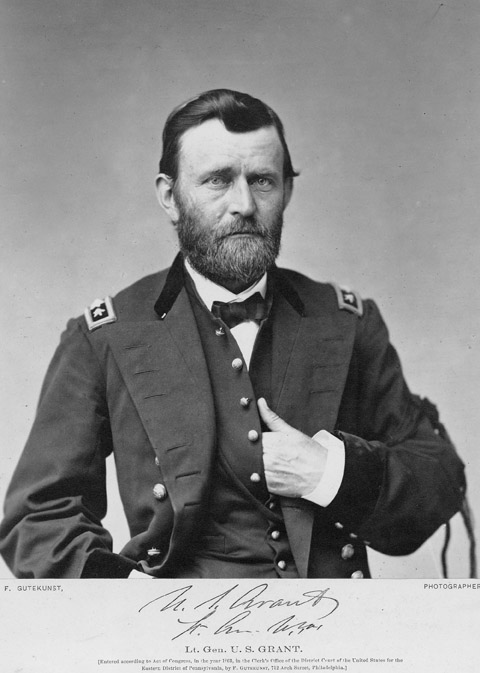
-
Description
Portrait of Ulysses S. Grant taken in April 1865 after accepting General Robert E. Lee's surrender at Appomattox. Grant is wearing a black crepe mourning band on his arm in honor of President Abraham Lincoln after he was assassinated. The photograph was taken in April 1865. However, the photographer mounted the portrait on a mat that has a printed copyright statement and the earlier date 1863.
-
Source
http://www.ohiomemory.org/cdm/ref/collection/p267401coll32/id/9296
-
Rights
Use of this item for research, teaching, and private study is permitted with proper citation and attribution, as Courtesy of the Ohio History Connection, Abraham Lincoln Presidential Collection . Reproduction of this item for publication, broadcast, or commercial use requires written permission. For permission, please see this web page
-
Creator
Gutekunst, Frederick
-
Date
April 30, 1865
from May. 1, 1865
Ohio Monument Association Receipt
-
Full Title
Ohio Monument Association Receipt
-
Description
This image is a receipt from the Ohio Monument Association signed by the Ohio State Treasurer, G. Volney Dorsey. The receipt is numbered number 8.
-
Transcription
Ohio Monument Association, Columbus, Ohio, 1865. Received of D. Thomson of Hardin County, Ohio one dollar as a contribution for the erection of a statue of Abraham Lincoln.
-
Source
http://www.ohiomemory.org/cdm/ref/collection/p267401coll32/id/7922
-
Rights
Use of this item for research, teaching, and private study is permitted with proper citation and attribution, as Courtesy of the Ohio History Connection, Abraham Lincoln Presidential Collection . Reproduction of this item for publication, broadcast, or commercial use requires written permission. For permission, please see this web page.
-
Tags
-
Cite this Item
Ohio Monument Association. "Ohio Monument Association Receipt". Remembering Lincoln. Web. Accessed December 16, 2025. https://rememberinglincoln.fords.org/node/272
from May. 1, 1865
Ohio Monument Association Receipt

-
Description
This image is a receipt from the Ohio Monument Association signed by the Ohio State Treasurer, G. Volney Dorsey. The receipt is numbered number 8.
-
Source
http://www.ohiomemory.org/cdm/ref/collection/p267401coll32/id/7922
-
Rights
Use of this item for research, teaching, and private study is permitted with proper citation and attribution, as Courtesy of the Ohio History Connection, Abraham Lincoln Presidential Collection . Reproduction of this item for publication, broadcast, or commercial use requires written permission. For permission, please see this web page.
-
Creator
Ohio Monument Association
-
Date
May 1, 1865
from Apr. 29, 1865
Catafalque in Ohio Statehouse Rotunda
-
Full Title
Catafalque in Ohio Statehouse Rotunda
-
Description
Carte de visite of the catafalque (raised platform) on which Abraham Lincoln's casket was placed in the rotunda of the Ohio Statehouse in Columbus, Ohio, on April 29, 1865. There is a 2-cent tax stamp on the back of the card. On Saturday, April 29, 1865, Lincoln's funeral train arrived in Columbus at 7:30 A.M. Lincoln's casket was taken to the Ohio Statehouse where he laid in state in the rotunda. The Statehouse was draped in black crepe for the occasion. Thousands of visitors came throughout the day to honor the fallen President.
-
Source
-
Rights
Use of this item for research, teaching, and private study is permitted with proper citation and attribution, as Courtesy of the Ohio History Connection, Abraham Lincoln Presidential Collection . Reproduction of this item for publication, broadcast, or commercial use requires written permission. For permission, please see this web page
-
Tags
-
Cite this Item
Witt, M. . "Catafalque in Ohio Statehouse Rotunda". Remembering Lincoln. Web. Accessed December 16, 2025. https://rememberinglincoln.fords.org/node/271
from Apr. 29, 1865
Catafalque in Ohio Statehouse Rotunda
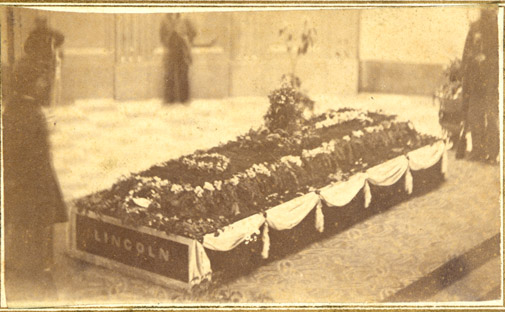
-
Description
Carte de visite of the catafalque (raised platform) on which Abraham Lincoln's casket was placed in the rotunda of the Ohio Statehouse in Columbus, Ohio, on April 29, 1865. There is a 2-cent tax stamp on the back of the card. On Saturday, April 29, 1865, Lincoln's funeral train arrived in Columbus at 7:30 A.M. Lincoln's casket was taken to the Ohio Statehouse where he laid in state in the rotunda. The Statehouse was draped in black crepe for the occasion. Thousands of visitors came throughout the day to honor the fallen President.
-
Source
-
Rights
Use of this item for research, teaching, and private study is permitted with proper citation and attribution, as Courtesy of the Ohio History Connection, Abraham Lincoln Presidential Collection . Reproduction of this item for publication, broadcast, or commercial use requires written permission. For permission, please see this web page
-
Creator
Witt, M.
-
Date
April 29, 1865
from Apr. 29, 1865
Ohio Statehouse during Lincoln's memorial
-
Full Title
Ohio Statehouse during Lincoln's memorial
-
Description
People waiting in line on the grounds of the Ohio Statehouse to pay their respects to President Abraham Lincoln, Columbus, Ohio, April 29, 1865. Lincoln's body began the trip from Washington D. C. back to his hometown of Springfield, Illinois, on April 21, 1865. The funeral train generally followed the route that Lincoln took when he traveled to Washington as President-elect in 1861. On Saturday, April 29, 1865, the train arrived in Columbus at 7:30 A.M. Lincoln's casket was taken to the Ohio Statehouse where he laid in state in the rotunda. The Statehouse was draped in black crepe for the occasion. Thousands of visitors came throughout the day to honor the fallen President.
-
Source
http://www.ohiomemory.org/cdm/ref/collection/p267401coll32/id/11849
-
Rights
Use of this item for research, teaching, and private study is permitted with proper citation and attribution, as Courtesy of the Ohio History Connection, Abraham Lincoln Presidential Collection . Reproduction of this item for publication, broadcast, or commercial use requires written permission. For permission, please see this web page
-
Tags
-
Cite this Item
Witt, M. . "Ohio Statehouse during Lincoln's memorial". Remembering Lincoln. Web. Accessed December 16, 2025. https://rememberinglincoln.fords.org/node/270
from Apr. 29, 1865
Ohio Statehouse during Lincoln's memorial
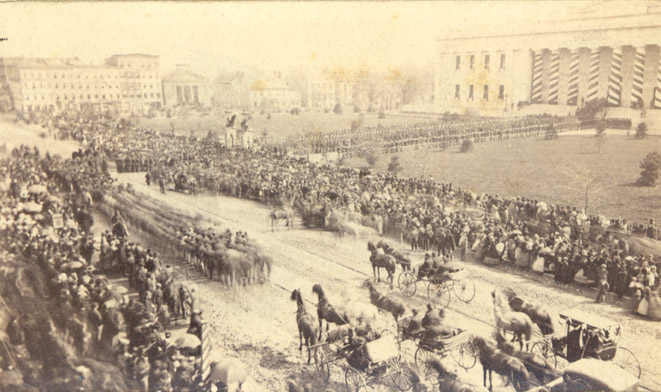
-
Description
People waiting in line on the grounds of the Ohio Statehouse to pay their respects to President Abraham Lincoln, Columbus, Ohio, April 29, 1865. Lincoln's body began the trip from Washington D. C. back to his hometown of Springfield, Illinois, on April 21, 1865. The funeral train generally followed the route that Lincoln took when he traveled to Washington as President-elect in 1861. On Saturday, April 29, 1865, the train arrived in Columbus at 7:30 A.M. Lincoln's casket was taken to the Ohio Statehouse where he laid in state in the rotunda. The Statehouse was draped in black crepe for the occasion. Thousands of visitors came throughout the day to honor the fallen President.
-
Source
http://www.ohiomemory.org/cdm/ref/collection/p267401coll32/id/11849
-
Rights
Use of this item for research, teaching, and private study is permitted with proper citation and attribution, as Courtesy of the Ohio History Connection, Abraham Lincoln Presidential Collection . Reproduction of this item for publication, broadcast, or commercial use requires written permission. For permission, please see this web page
-
Creator
Witt, M.
-
Date
April 29, 1865

